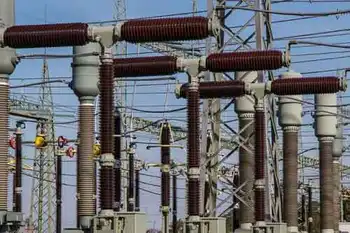Who gains if Indian Point closes down?
DANNEMORA, NEW YORK - With the future of the Indian Point nuclear power station near New York City in jeopardy, investors may want to take a look at the power producers and suppliers who could benefit.
The crisis at a nuclear plant in Japan has prompted New York Governor Andrew Cuomo to step up efforts to have Indian Point, which is about 40 miles north of Manhattan, shut.
He argues the plant is on a potentially dangerous fault line and is too close to the nation's biggest metropolitan area, home to more than 19 million people.
The only problem is that Indian Point provides between 18 percent and 38 percent of the electricity used in the downstate New York area, which includes New York City. The range is related to seasonal demand with the peak hit in the summer.
To fill that gap, utilities serving customers in the Big Apple would have to buy more electricity from other producers with plants in the area like Canadian energy giant TransCanada Corp and independent power producers Dynegy Inc, GenOn Energy Inc and NRG Energy Inc.
That would hurt consumers, whether residents of the Big Apple or companies based here, as they would have to pay more for their power.
To be sure, Indian Point won't be closed tomorrow.
Entergy Corp, the nation's second biggest nuclear power operator and owner of the 2,000-megawatt Indian Point plant, is working to renew the plant's operating licenses and keep it running for another two decades.
"NRC staff has concluded that Indian Point can run safely for an additional 20 years, with no environmental issues that would preclude license renewal," plant spokesman Jerry Nappi said, referring to the U.S. Nuclear Regulatory Commission, which is reviewing Entergy's application for new licenses.
The plant can generate about $3 million a day or $1 billion a year in revenue based on local wholesale power prices.
Some state politicians and environmental groups have been fighting to shut Indian Point for decades, but have been stymied by federal regulators who say the plant is safe.
But that was before the nuclear crisis in Japan that has analysts taking another look at whether the plant can survive.
"We remain concerned about the status of the Indian Point plant following the reaction to the tragedy in Japan," Barclays Capital analysts said in a research report.
Reports of high radiation around Japan's crippled Fukushima nuclear plant, damaged by an earthquake and tsunami three weeks ago, have Governor Cuomo and state attorney general, Eric Schneiderman, working overtime to shut the plant.
"Uncertainty is the operative word. I do think it would behoove one not to underestimate the trouble local officials can cause power generators," said Paul Patterson an energy analyst at consultants Glenrock Associates in New York.
The analysts also said developers seeking to build new generation or transmission projects could benefit if Entergy is forced to shut the two reactors at Indian Point when their licenses expire in 2013 and 2015.
These mostly private developers include TransGas Energy, U.S. Power Generating and Deepwater Wind.
Oil company Hess Corp and investment firm ArcLight Capital are building the Bayonne natural gas-fired plant across the Hudson River in New Jersey, which will connect to the city via an underwater power cable.
Those seeking to build other transmission links to the city include private firms PowerBridge and Cavallo Energy who like Hess want to install cables under the Hudson River from New Jersey and Transmission Developers, which wants to bury a cable from Quebec under Lake Champlain and the Hudson River.
In addition to Entergy, the shutdown of Indian Point would also hit local communities around the plant especially hard.
The plant employs 1,100 full-time workers with a payroll of about $130 million in 2009, Entergy's Nappi said. The company paid out about $25 million in property tax last year and has an estimated economic impact on the state of about $800 million.
And, consumers would suffer if the reactors shut since replacing their low-cost energy output could cost more than $1 billion a year and increase the likelihood of price spikes and power shortages in the area, Entergy warned.
"The notion that removing 2,000 MW of electricity from the New York grid won't harm reliability or lead to higher prices defies any measure of credibly or objective analysis," a spokesman for the city's power company Consolidated Edison Inc said.
Con Edison estimated electric bills could rise 6 percent if Indian Point was to shut.
Finally, the state's effort to combat global warming and reduce carbon emissions would take a hit since nuclear plants produce lots of electricity but no carbon dioxide.
In the short-term, analysts said pollution from existing gas and old coal-fired plants would climb as their output increases to replace the power lost from Indian Point.
Over time, the analysts said most of the new plants built in and around the city would likely be fueled by natural gas, which is cleaner than coal, but still produces carbon.
Related News

ERCOT Issues RFP to Procure Capacity to Alleviate Winter Concerns
AUSTIN - The Electric Reliability Council of Texas (ERCOT) issued a request for proposals to stakeholders to procure up to 3,000 MW of generation or demand response capacity to meet load and reserve requirements during the winter 2023-24 peak load season (Dec. 1, 2023, through Feb. 29, 2024).
ERCOT cited “several factors, including significant peak load growth since last winter, recent and proposed retirements of dispatchable Generation Resources, and recent extreme winter weather events, including Winter Storm Elliott in December 2022, Winter Storm Uri in February 2021, and the 2018 and 2011 winter storms, each of which resulted in abnormally high…




